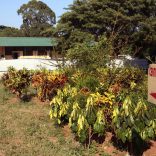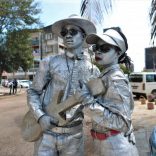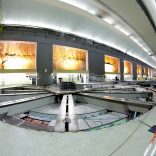Saudi Arabia sends lifesaving date shipment to feed 100,000 conflict-affected Mozambicans
Instead of cordons sanitaires, Mozambique needs to reduce “mobility between households; we cannot visit family members”

Photo: A Verdade
After nearly three-and-a-half months of the state of emergency regulations, the spread of the new coronavirus increased to 13 cases per million inhabitants, meaning that positivity accelerated to 3 percent, while the Ministry of Health’s strategy remains to reduce “the pattern of transmission, to flatten the curve and delay the peak”.
But Dr Eduardo Samo Gudo Júnior has made it clear that delaying the peak of Covid-19 depends on Mozambicans and not on any cordons sanitaires. “When we talk about reducing mobility we talk about reducing mobility from one province to another, reducing mobility from one city to another, reducing mobility from one neighbourhood to another, reducing mobility from one house to another. We cannot visit family members,” he explained.
At the beginning of the 13th week of the pandemic, the Deputy Director-General of the National Institute of Health revealed that it is still accelerating in the country. “Mozambique had about 7 cases per million inhabitants, but in the week of the 5th of May, we had 11 cases per million inhabitants. This is a significant increase. Including today’s figures, this increases to 13 cases per million inhabitants. Last week [Mozambique] was one of the countries with fewer cases; today, it has overtaken Tanzania and Namibia,” Dr Samo Gudo reported.
Dr. Samo Gudo told a press conference on Sunday (June 7) that “the number of cases in a country indicates the magnitude of the epidemic, which is its size, but it is not the only variable that has to be evaluated when interpreting the epidemiology (…) We also look at speed, what is the trend, regardless of the number of cases, whether it is slow or fast compared to other regions”.
“The world average is for it to take more than one month, actually 35 days, for the number of cases to double. Mozambique has taken an average of 13 days, , and last week this average was 15 days.”
“Last week Mozambique was among the 35 countries taking the least number of days to duplicate. Today, seven days later, we are among the 20 fastest countries, advancing 15 positions,” the epidemiologist reported. According to the him, after 14,010 tests and 424 individuals diagnosed, “our average positivity rate today is 3 percent. A week ago it was 2.3 percent, which means that the proportion of positive individuals among those we are testing is increasing in line with the acceleration of the epidemic”.
“The month of May had 31 days and ended with 178 cases, the highest recorded. Today we are on the 7th day of June and we already have 170 [newly diagnosed] cases,” Dr Samo Juno spelled out, adding that “the epidemic begins to be dominated by cases discovered by active surveillance, which no represent 51 percent of diagnosed cases”.
“We have to delay this peak to a time when we are already more prepared, even to a time when there is already a treatment”
The profile of Covid-19 patients in Mozambique remains predominantly “young people and adults. However, we are beginning to see an increase in children and also in the elderly. There is also a tendency in the epidemiological profile of the patients that we diagnose towards individuals with mild-to-moderate symptoms”.
The deputy director-general of the National Institute of Health admitted that the authorities did not know how the coronavirus spread to Nampula province, the new epicentre of the pandemic, and in the face of repeated requests for a cordon sanitaire for Nampula city, the so-called Capital of the North, Dr Samo Gudo noted that the Presidential Decree imposing the State of Emergency has a paragraph that makes provision for “limit[ing] the internal movement of people in any part of the national territory”.
“When we talk about reducing mobility we mean about reducing mobility from one province to another, reducing mobility from one city to another, reducing mobility from one neighbourhood to another, reducing mobility from one house to another, so that we cannot even visit family members. It is not recommended to visit family members; it is not recommended to make unnecessary trips,” the Mozambican epidemiologist reiterated.
Regarding the strategy to delay the peak of the Covid-19 pandemic to January/February 2021, Dr Samo Gudo recognised “this is a new virus, so we have to avoid prognostications. It is true that we can use modelling to try to understand it, but it’s a virus about which we know only what we know”.
“However, the key message here is to control the epidemic, reduce the transmission pattern, to flatten the curve and delay the peak.”
“An early spike can cause the health system to collapse and lead to a very high number of infections in a short period of time. Flattening the curve means having a lower number of cases over time. The peak is the worst moment of an epidemic, the moment when the number of cases per day is the highest, and usually when the number of hospitalisations and deaths is also the highest. We have to delay this peak to a time when we are better prepared, or even to a time when there is a treatment, at least so that we have at least one effective tool to face that peak. When will the peak happen, and how long will we be able to delay it? The answer lies with us: if we comply with the measures we will certainly flatten the curve, making for a slow epidemic, and delay the peak, giving us a late peak,” Dr Samo Juno argued.
By Adérito Caldeira













Leave a Reply
Be the First to Comment!
You must be logged in to post a comment.
You must be logged in to post a comment.